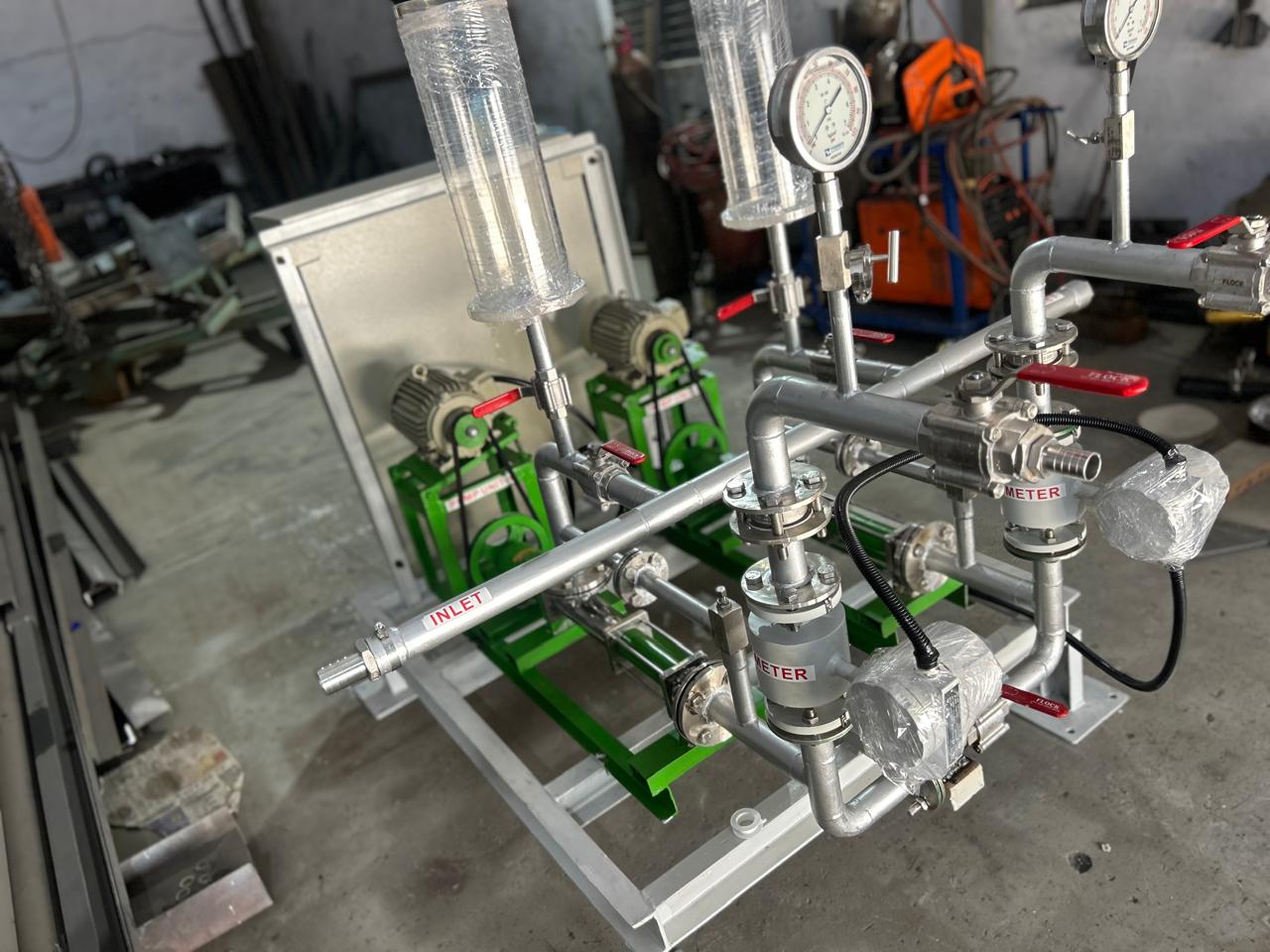
Dosing Skid System
A chemical dosing skid is a self-contained unit used in industrial processes to precisely inject chemicals into a system. It consists of various components and instruments that work together to ensure the controlled supply of chemicals in a safe and efficient manner.
VATSAL ENGINEERS presents it as a compact unit, which is supplied fully assembled, all that is needed is to anchor the unit and make the hydraulic and electrical connections. The design of skid unit includes all the necessary elements, positioned appropriately to guarantee the optimization of dosing processes.
- Overview
- Gallery
A dosing skid works by precisely delivering a predetermined amount of chemical into a larger industrial process. Here’s how a typical dosing skid works:
Storage and preparation of the chemical: The dosing skid is connected to a reservoir or tank where the chemical to be dosed is stored. Before starting the dosing process, the chemical is prepared if necessary and its properties checked.
Starting the dosing process: The dosing process is started manually or via an automated control system. The operator can set parameters such as the desired flow rate, the total volume to be dosed or any specific timing or sequencing requirements.
Flow control: The dosing skid pumps are suitable for creating a controlled flow of chemical. The flow rate is carefully adjusted based on the quantity required and the characteristics of the chemical being dosed.
Feedback and control circuit: The control system is very usually based on measuring the flow rate using a flow meter in the main line and dosing the chemical to be dosed proportionally to the flow rate. If the flow rate in the main line changes, the system adjusts the amount of product dosed by the dosing skid pumps.
Monitoring and safety: Throughout the dosing process, various sensors and components can monitor parameters such as pressure, temperature, the presence of fluid, etc. For system safety, pressure relief valves and leak detection systems are used, among others.
Completion and reporting: When the process is finished, the control system can generate process records or reports, which can be used for process analysis and for operation and maintenance control.
Maintenance and calibration: Regular maintenance and calibration of dosing system components is crucial to ensure accurate and reliable dosing. This includes checking the accuracy of flow meters, calibrating pumps and checking the functionality of safety components.
In conclusion, a dosing skid works through a combination of pumps, flow meters, control systems and safety features to deliver chemicals accurately and safely in an industrial process. The process is automated and closely monitored to ensure that the desired dosage is achieved while maintaining the safety and efficiency of the process.

